
Easy Methods How To Transfer Pictures From Apple iPhone 7 Plus to PC | Dr.fone

Easy Methods: How To Transfer Pictures From Apple iPhone 7 Plus to PC
Photo transfer from your iPhone to your PC is a common practice for various reasons. It can free up your device’s storage space, create backups, or simply edit and organize your photos on a larger screen.
Thankfully, there are various methods to transfer pictures from your iPhone to your PC, providing flexibility to users based on their preferences and convenience. Read our comprehensive guide on how to transfer pictures from Apple iPhone 7 Plus to PC. This article covers step-by-step instructions so you can easily and efficiently manage and transfer your iPhone photos to your computer while preserving your cherished memories.
Part 1: How To Transfer Pictures From Apple iPhone 7 Plus to PC with iCloud
One of the widely used and efficient methods to transfer pictures from your iPhone to a PC is through iCloud, Apple’s cloud-based service. iCloud provides seamless integration across Apple devices, allowing users to sync and access their photos and videos effortlessly.
However, even if your PC is using other operating systems, such as Windows, you can still use iCloud for Windows to save and transfer your iPhone photos from iCloud.
How to transfer iPhone photos to a computer using iCloud:
Step 1: Make sure you have synced iCloud photos on your iPhone.
On your iPhone Settings, go to your profile and tap iCloud. Then, select Photos and turn on the switch next to “Sync this [device].” Otherwise, go to iCloud settings > iCloud Drive, and switch on “Sync this iPhone.”
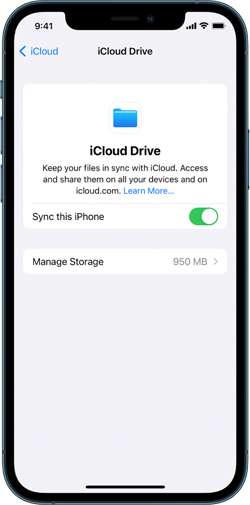
Step 2: Set up your iCloud for Windows.
Open iCloud for Windows and ensure you’re signed in with your Apple ID. Next to Photos, select Options > iCloud Photos. Click “Done” and “Apply” to save the changes and close the window.
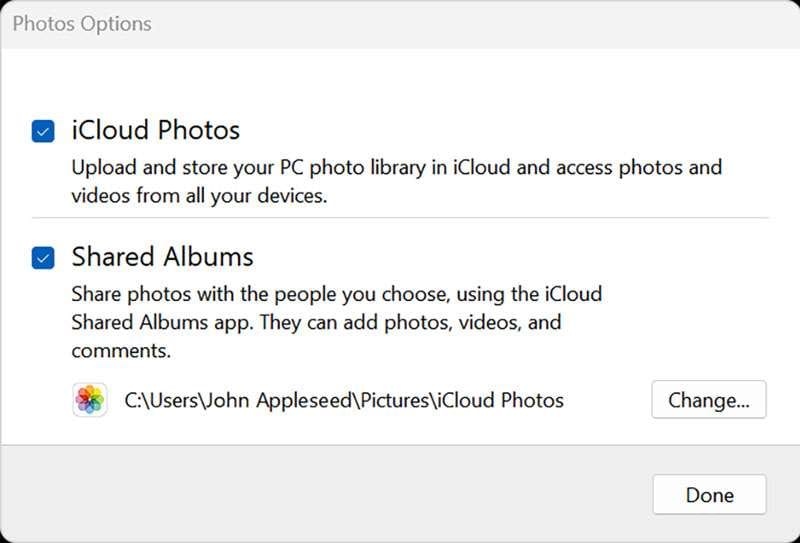
Step 3: Keep iPhone photos on PC.
Open iCloud Photos and select the images you want to transfer to your PC. Right-click to open a drop-down menu and choose “Always keep on this device.”
That’s it! Now, you can find your iPhone Photos on your computer.
Part 2: How To Transfer Pictures From iPhone with Google Drive
Another convenient way to transfer iPhone pics to a computer is through Google Drive. As a cloud-based storage solution, Google Drive allows users to seamlessly store, manage, and share files, including photos, across different devices.
If you already have a Google account, you can jump right into Google Drive without signing up. However, be aware that the free version only gives you 15 GB of space. If you need more room, you’ll have to sign up for a subscription.
How to transfer iPhone pictures to a computer with Google Drive:
Step 1: Set up your Google Drive.
Open Google Drive on your iPhone. Once opened, tap the multicolored + symbol and select “Upload” > “Photos and Videos.” If prompted, grant access to all photos by tapping “Allow Access to All Photos.”
Step 2: Upload your iPhone photos on Google Drive.
Browse through your iPhone albums to locate the specific photos you wish to upload. Hold and tap to select multiple photos. Then, tap “Upload” to upload your iPhone photos to Google Drive.
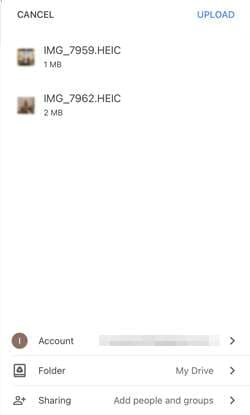
Optional: Automatic backup or sync with Google Photos
For those seeking automatic backups, open Google Photos, tap your profile image, navigate to “Google Photos settings,” and select “Backup & Sync.” Toggle “Backup & Sync” to On for continuous backups.
Step 3: Transfer your iPhone photos from Google Drive to your PC.
Once your photos are stored on Google Drive, proceed to save and transfer them to your PC. Select the desired photos in Google Drive, and click “Download.”
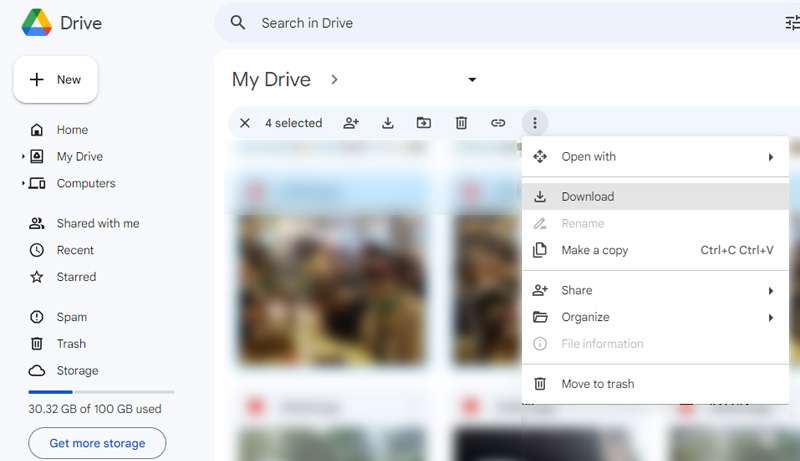
To save all photos from a specific Google Drive folder, open Google Drive and select “My Drive.” Locate the intended folder, and click the three dots to open the drop-down menu. Select “Download,” and all photos and files within the folder will be saved to your computer in ZIP format.
Part 3: How To Transfer Pictures From iPhone with iTunes
You can also make the most of iTunes to secure your iPhone with backups, keep it up-to-date, or synchronize content between your iOS device and your computer in both directions. Even if you’re a Windows PC user, there’s no need to fret. Although iTunes is an Apple product, it’s also available for Windows use.
To get started, make sure that you have iTunes for Windows installed or update your existing version to at least iTunes 12.5.1. Once done, follow the instructions below.
How to transfer iPhone pics to a PC using iTunes:
Step 1: Connect your device to your computer.
Plug in your iPhone to your computer using a USB cable.
Step 2: Grant access to your iPhone Photos.
If your phone is asking you to Trust This Computer, tap “Trust” or “Allow to proceed.”
Step 3: Open your computer’s Photos app.
Go to the Start menu on your PC. Search and select Photos to open the Photos app.

Step 4: Import your Photos to your PC.
Within the Photos app, click on Import > From a USB device and follow the instructions on the screen. You can choose specific photos for the transfer and decide where to save them on your PC. Remember to make sure that the photos are saved on the Apple iPhone 7 Plus device rather than stored in the cloud.
Finally, allow a few moments for the system to detect and transfer the selected photos.
Part 4: How To Quick Transfer Pictures From Apple iPhone 7 Plus to PC
If you find the above methods difficult, there is a quick and easy way to transfer photos from your iPhone to a PC with Dr. Fone’s Export All Data feature. With this feature, there’s no need to navigate through various locations to just locate and transfer files from your iPhone.
Dr.Fone - Phone Manager (iOS)
Transfer Photos from Computer to iPod/iPhone/iPad without iTunes
- Transfer, manage, export/import your music, photos, videos, contacts, SMS, Apps, etc.
- Back up your music, photos, videos, contacts, SMS, Apps, etc., to the computer and restore them easily.
- Transfer music, photos, videos, contacts, messages, etc., from one smartphone to another.
- Transfer media files between iOS devices and iTunes.
- Fully compatible with iOS 7 to iOS 15 and iPod.
3981454 people have downloaded it
Dr. Fone’s Export All Data feature offers some great functionalities, including:
- Comprehensive data export, including Photos, Contacts, Messages, Voicemail, and more
- Encrypted data transfer and backups
- Available for iOS and Android devices
- Regular updates to provide an enhanced user experience
To transfer photos from your iPhone to a PC using Dr.Fone, follow the step-by-step below:
Step 1: Launch Dr.Fone and make device connections using a USB cable.
Start by Image nameing your iPhone device to the computer via a USB connection. Launch Dr.Fone and select “Export all data” in the My Device section.

Step 2: Choose file types for export
When a new window appears, select the specific file types you wish to transfer (in this case, your photos). Then, click “Export” at the bottom of the screen to initiate the procedure. Choose the preferred location for saving the exported data.
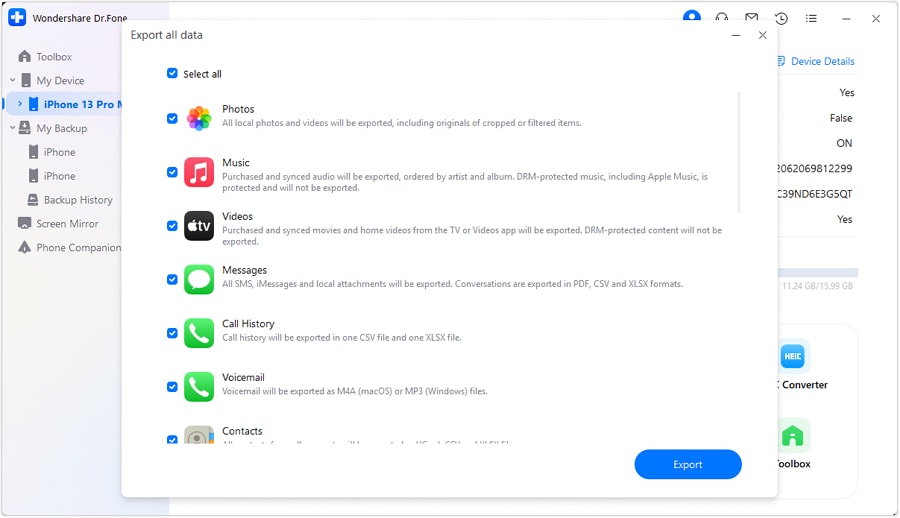
Step 3: Make a password for the backup file
Next, you will be asked to create an encrypted password for the backup file to be stored on the computer. Set a password, confirm it, and click “Done” to execute the process.
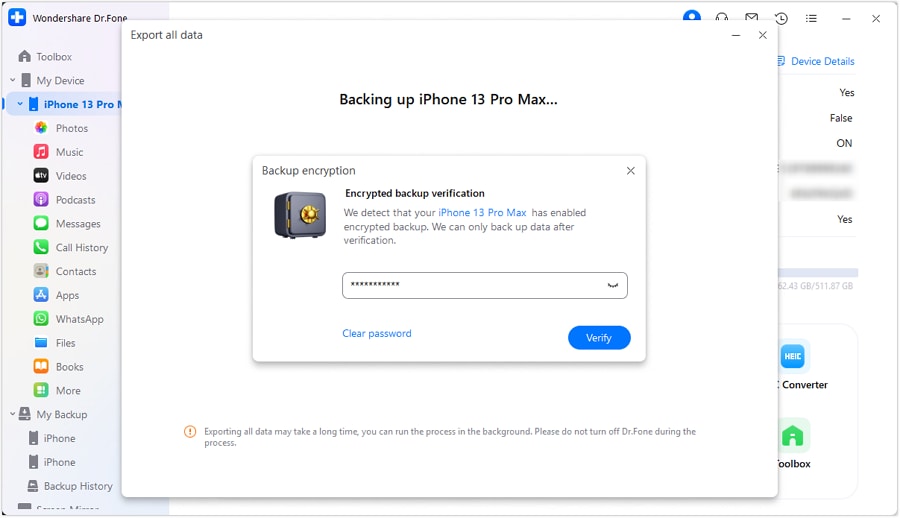
Step 4: Monitor the progress
Your iPhone will start exporting its data to the computer through Dr.Fone. You can wait and monitor the progress on the screen.

Step 5: Successful export of data to the computer
After successful completion of exporting the data, a window will appear on your computer screen. Click “Open” to review the exported data at the specified location.
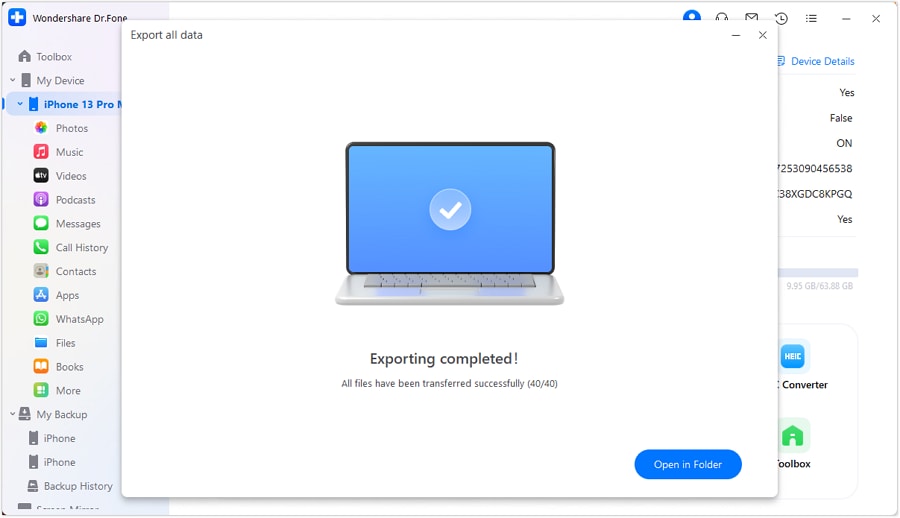
Conclusion
Before, you must have wondered how do you transfer pictures from Apple iPhone 7 Plus to PC. But after learning from the article above, you now have a variety of straightforward methods in your hand, whether with iCloud, Google Drive, iTunes, or reliable software like Dr.Fone.
If you’re embedded in the Apple ecosystem, iCloud provides seamless integration of your iPhone Photos. Alternatively, Google Drive offers a cross-platform solution, enabling you to upload your iPhone photos to the cloud and access them on your computer browser.
For those who prefer a more traditional approach, iTunes provides a straightforward method via a USB connection. And if you’re looking for a quick and versatile third-party solution, software like Dr.Fone simplifies the data transfer process with its user-friendly interface and robust features.
Effortless Ways to Transfer Data from Your Apple iPhone 7 Plus to iPhone 15
With the arrival of the iPhone 15, Apple continues to redefine technological boundaries. It offers users a device that combines innovation and elegance. If you are also switching to iPhone 15 from your Apple iPhone 7 Plus, you will need to move data from one device to another. In this comprehensive guide, we explore iPhone 15 transfer data from your old phone.
This guide will decode the process, ensuring your valuable data finds its new home in the iPhone 15 without a hitch. Stick with the article to find different ways for data transfer to the new iPhone 15.
Part 1: How To Perform iPhone 15 Data Transfer With Official Methods
When it comes to data transfer to iPhone 15 from your old phone, there are multiple options available. There are four official methods available to transfer data from an old phone to a new iPhone. These range from using backups like iCloud and iTunes to direct transfer. Given below are the 4 official methods to transfer your data to the new iPhone 15:
Method 1: Using iCloud Backup
iCloud Backup emerges as a powerful solution when it comes to transferring your data to the iPhone 15. Apple’s cloud-based ecosystem enables you to migrate your essential information seamlessly. It ensures that your new device is an extension of your digital world. Follow these steps to use iCloud Backup for a smooth transition:
- Step 1: First, we begin with creating a backup of your old iPhone. To do that, you need to navigate to Settings and tap Apple ID. Here choose “iCloud” and follow it by tapping “iCloud Backup.” Ensure it is toggled on, and use “Back Up Now” to create an iCloud backup.
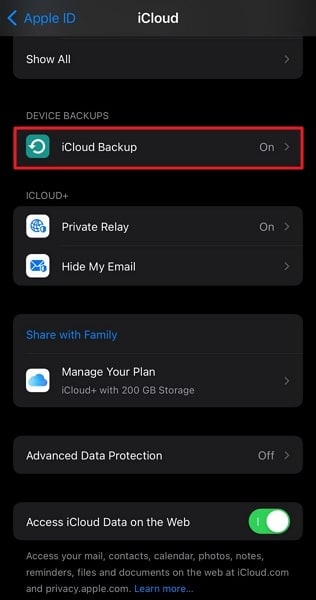
- Step 2: Now move to your new iPhone 15 and start setting it up. When you reach the “Apps & Data” screen, tap “Restore from iCloud Backup.” Here, log in using your Apple ID and choose the most recent backup file to restore data.
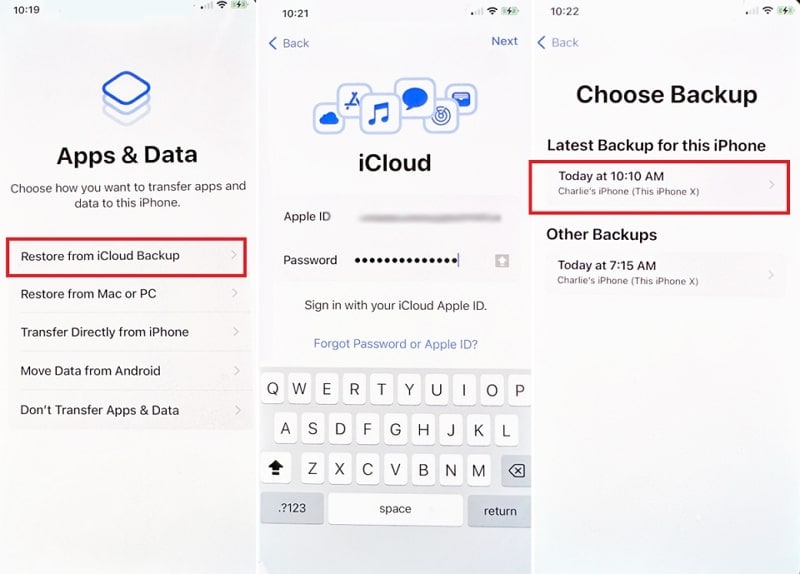
Method 2: Use the iTunes/Finder Backup
iTunes/Finder presents a reliable and customizable option for data transfer to a new iPhone. It is great for those who prefer a more hands-on approach to data transfer. You can create a backup of your Apple iPhone 7 Plus on your computer. Later this backup is used to transfer your Apple iPhone 7 Plus data to the new one. Follow these steps to transfer your data using iTunes or Finder:
- Step 1: Begin by connecting your previous device to your computer using a USB cable. If you’re using macOS Catalina or a later version, open Finder; otherwise, open iTunes. When your device is detected, ensure it’s selected in iTunes or Finder.
- Step 2: Navigate to the “Summary” section and locate the “Back Up Now” option. Click on it to commence a comprehensive backup of your Apple iPhone 7 Plus. The duration of this process depends on the volume of your data and may require some time.

- Step 3: Power up your iPhone 15 and follow the initial setup prompts until you reach the “Apps & Data” display. Here opt for the “Restore from Mac or PC” and connect your iPhone 15 to the same computer where you performed the backup.
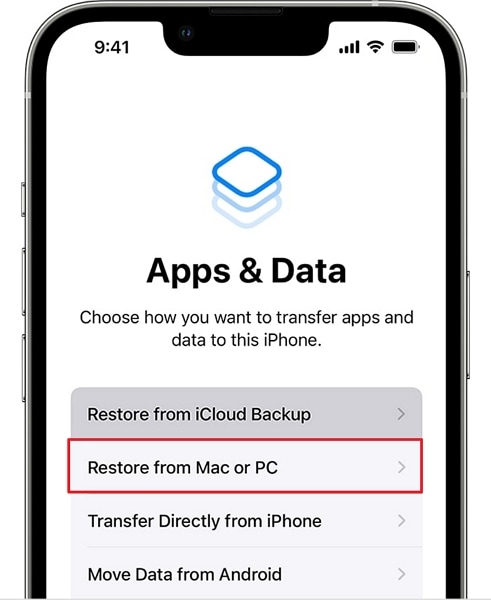
- Step 4: In Finder or iTunes, select your iPhone 15 from the sidebar or top. Enable the “Restore from this Backup” option and choose the most recent backup you created. Afterward, click “Continue” to begin the process of transferring the old iPhone data to iPhone 15.
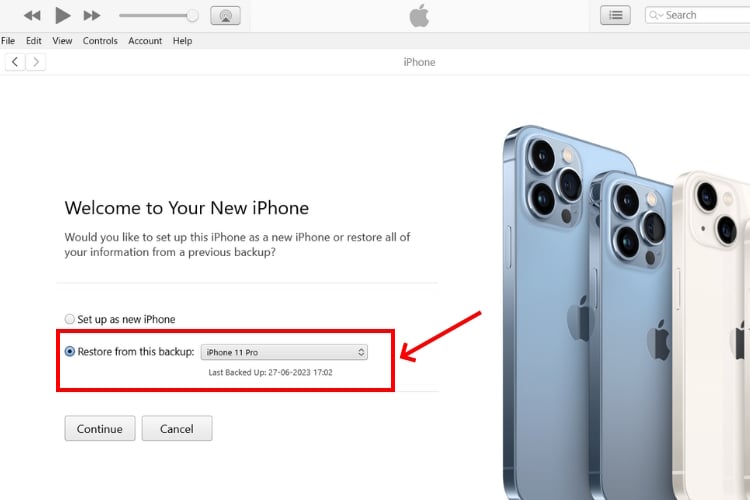
Method 3: Transfer Directly Through Another iPhone
When setting up a new iPhone 15, transferring data directly from the Apple iPhone 7 Plus to the new one is possible. Transferring data directly from one device to another is also known as the Quick Start method. It requires minimal equipment and promises a swift and efficient data migration process. Follow these steps to execute a direct transfer between iPhones:
- Step 1: Ensure the Bluetooth and Wi-Fi are enabled on the old iPhone. Now turn on the new iPhone and place it near the Apple iPhone 7 Plus. Press “Continue” when a prompt appears on the old iPhone about setting up the new iPhone 15.
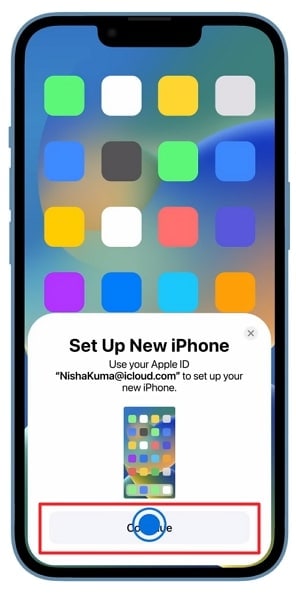
- Step 2: An animation will appear on the screen of the new iPhone 15. Scan it using the old iPhone, and afterward, enter the 6-digit passcode of the Apple iPhone 7 Plus on the new iPhone 15. Log in using your Apple ID and set up your Face ID.
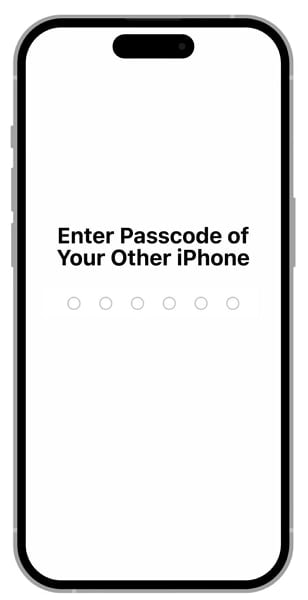
- Step 3: When it asks you to choose a data transfer method, select “Transfer from iPhone.” It will kickstart the process of transferring your Apple iPhone 7 Plus data to the new one. Keep the Apple iPhone 7 Plus devices close to each other to avoid any complications.
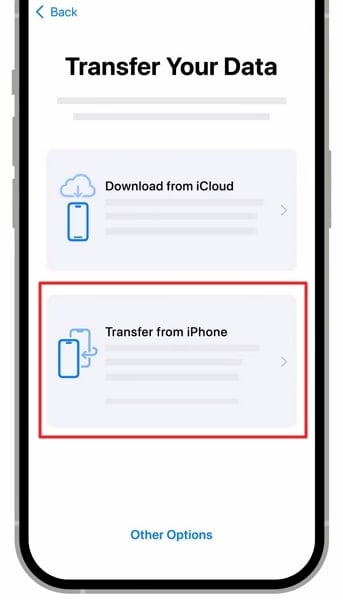
Method 4: Transfer Data from Android to iPhone 15
Transitioning from an Android device to the iPhone 15 is now a seamless process. It is mainly thanks to Apple’s “Move to iOS” app. Designed to simplify the transfer of your data, this app ensures that your switch to the iPhone 15 is smooth and hassle-free. Use the simplified steps given below to transfer data to iPhone 15:
- Step 1: Turn on your new iPhone and set it up until you reach the “Apps & Data” screen. Here, tap “Move Data from Android” and move to the Android device.
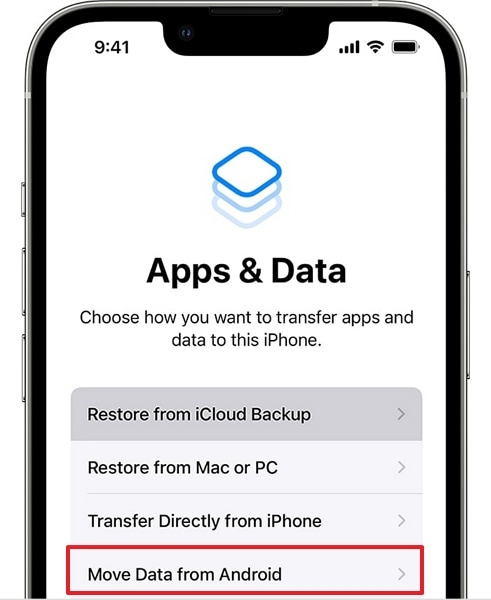
- Step 2: On your Apple iPhone 7 Plus, install and launch the Move to iOS app. Agree to the terms and conditions, and on the iOS device, press “Continue” once the Move to Android screen appears. It will display a code that you need to put on the Android device to establish a connection.
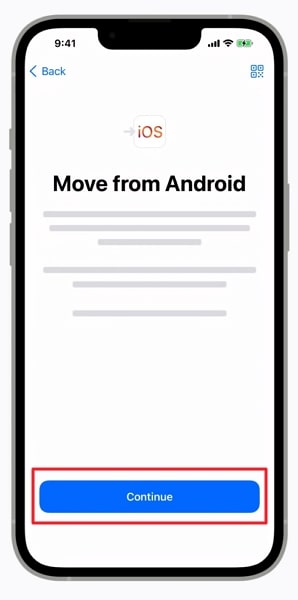
- Step 3: Once both devices are connected to the temporary Wi-Fi network, wait for the data transfer screen to appear on the Android. Then, choose the old Android device data you want to transfer. Lastly, press “Continue” to start the Android to iPhone 15 transfer process.
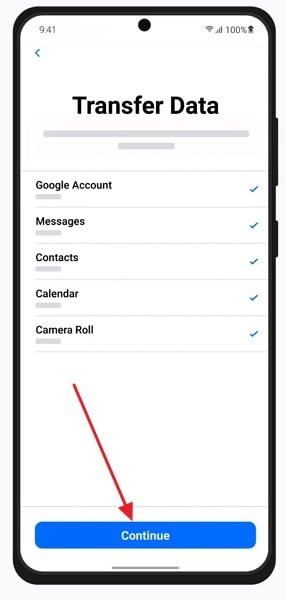
Part 2: The Blazing Fast and Efficient Phone Transfer Tool for iPhone 15
Whenever you switch from one device to another, data transfer stands out as the main hurdle. It makes you want to have a tool that can simplify the process and be quick at your disposal. Luckily, there is one such tool, and that is Dr.Fone - Phone Transfer . This software allows you to transfer data between Android and iOS devices with ease.
Main Features of Wondershare Dr.Fone
- Wondershare Dr.Fone supports data transfer over 12 types of data between different devices.
- It is a blazing-fast tool with a much higher data transfer speed than most official transfer tools.
- This software supports over 8000 smartphones for data transfer across all major brands.
Steps To Use Wondershare Dr.Fone To Transfer Old Device Data to iPhone 15
Given below are the detailed steps to use Wondershare Dr.Fone to transfer data to iPhone 15:
- Step 1: Connect the Respective Devices
To transfer data from your old phone to iPhone 15, start with launching Wondershare Dr.Fone on your computer. Next, head towards the “Toolbox” option and tap on it. It will show you a list of options from which you need to select the “Phone Transfer” option. Besides this, connect your old and new devices to your computer.

- Step 2: Assign Correct Positions to the Apple iPhone 7 Plus devices
So that platform can automatically detect them and give them respective positions as “Source” and “Destination.” Your old phone would be the “Source,” while the new iPhone 15 is the “Destination.” Here, if the position of the Apple iPhone 7 Plus devices is incorrect, use the “Flip” button to change the position between devices.

- Step 3: Start the iPhone 15 Transfer Process
After this, select the data types on the platform you want to transfer and click the “Start Transfer” option. This will initiate the process of transferring data from source to destination, which you can track on the progress bar in the new window. Once the process is completed, click the “OK” button to conclude the process.
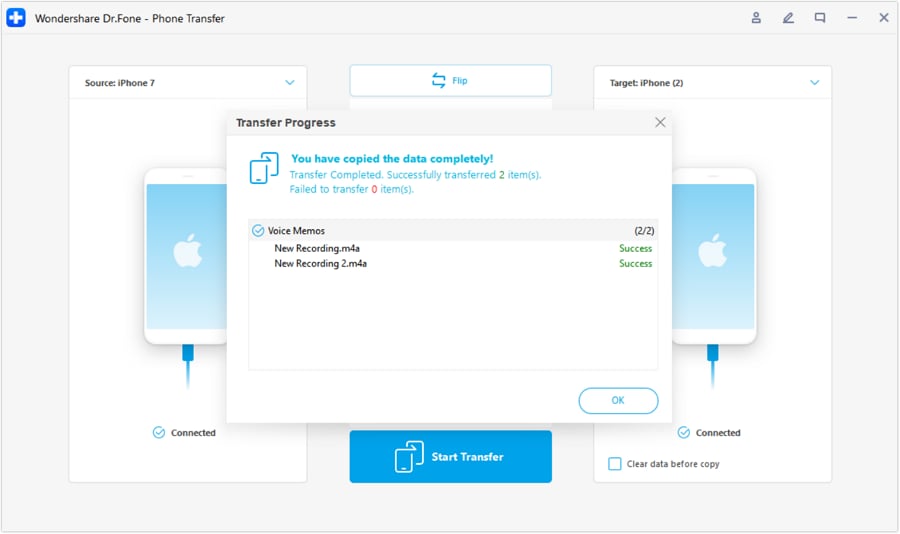
Part 3: Having Trouble When Transferring to iPhone 15 Stucks?
The issue of iPhone 15 getting stuck when users attempt to transfer data from their older devices, like the iPhone 14, to the new iPhone 15 has become a frustrating challenge for many Apple enthusiasts. This problem often arises due to the complex nature of data migration and the high expectations associated with Apple’s seamless ecosystem. When attempting to transfer photos, apps, contacts, and other vital information, users may encounter lengthy delays, frozen screens, or failed transfers.
The possible reasons could be:
- ·Software glitches
- ·Insufficient storage space
- ·Incompatible iOS versions between the old and new devices
The impact of this issue extends beyond mere inconvenience, as it can result in data loss or a less-than-optimal out-of-the-box experience with the latest iPhone. Addressing this problem, you may try:
- ·Updating both devices to the latest iOS version
- ·Ensuring sufficient storage
- ·Seeking assistance from Apple Support
- ·Authorized service providers when necessary
Or, you can also try to ask for help from a third-party application, Dr.Fone - Phone Transfer is always at your service. Dr.Fone - Phone Transfer offers a reliable solution to the iPhone data transfer problem. This user-friendly software is designed to simplify the migration process, making it hassle-free for iPhone users. Here are the steps to get you started:
Step 1 Launch Phone Transfer Tool
Initiate the process by launching Wondershare Dr.Fone on the computer. Continue from Toolbox > Phone Transfer to redirect towards opening the particular tool.

Step 2 Set Data Transfer Path
On accessing the Phone Transfer tool, continue to connect your iOS devices and let them load their data on the next screen. Here, define the Source and Destination of the transfer to specify the direction of the phone transfer. To change locations, use the Flip button on the top.

Step 3 Choose Data Types
After successfully determining the source and destination, select the specific data types you want to transfer. Checkmark all data and select Start Transfer to proceed with the operations.

Step 4 Turn Off Find My Feature
Once done, a prompt appears on the front asking to turn off the Find My feature on iOS devices. Open the Settings of the iOS device and proceed further by tapping on the name at the top. Continue from iCloud > Find My feature and turn it off.
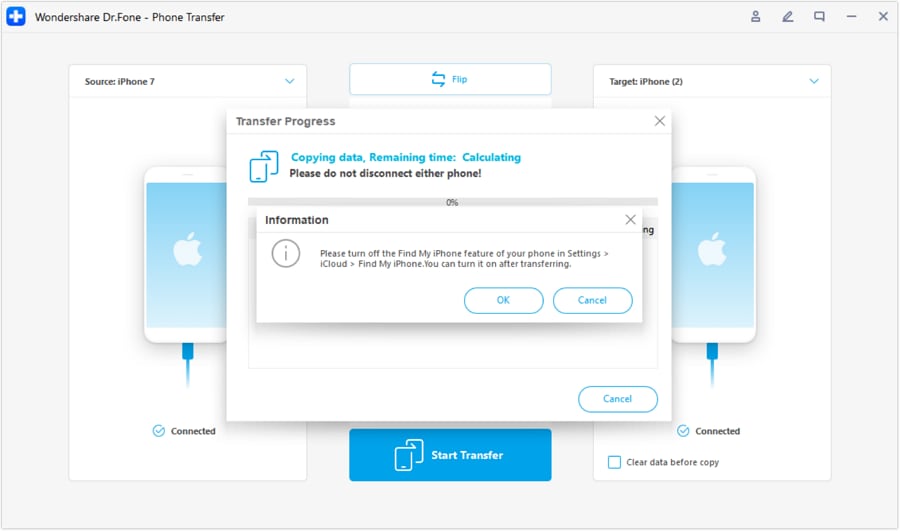
Step 5 Complete Your Transfer
Once done, the window in the front shows the completed phone transfer. Click OK to conclude the process entirely.

Bonus Tip: The Best Data Eraser To Make Apple iPhone 7 Plus Data Unrecoverable
Nowadays, data privacy is paramount. That’s why ensuring your old phone’s sensitive information remains unrecoverable is crucial. Before you part ways with your device, just deleting the data or factory resetting your device isn’t enough. Wondershare Dr.Fone doesn’t stop at facilitating seamless data transfer. It also offers an exceptional data eraser feature.
This ensures your data is permanently wiped from your old phone, leaving no traces behind. Moreover, it consists of a private data eraser through which you can erase your data and make it unrecoverable. You can also use its Space Saver feature to erase junk data to speed up your old or new device.
Conclusion
In summary, the realm of mobile technology continues to evolve. It has increased the importance of smooth and efficient data transfer. With the arrival of the iPhone 15, a new world of possibilities opens up. The journey of iPhone 15 data transfer should be a seamless transition. In this guide, we’ve explored a range of methods, both official and third-party.
These empower you to transfer your cherished data to the iPhone 15 easily. While Apple’s official methods offer solid data migration, Wondershare Dr.Fone emerges as the ultimate solution that goes beyond the ordinary. Its unparalleled data transfer and erasure capabilities make it a game-changer.
3 Ways to Export Contacts from Apple iPhone 7 Plus to Excel CSV & vCard Easily
A lot of readers have asked us how to export contacts from Apple iPhone 7 Plus to Excel. After all, it allows them to keep their contacts handy and transfer them to any other device pretty easily. Though, if you are using an iOS device, then you might find it hard to export iPhone contacts to CSV at first. Nevertheless, there are some smart and quick ways of exporting iPhone contacts to Excel that every iOS user should know. In this guide, we will teach you in three different ways, how to export iPhone contacts to Excel free.
Part 1: How to export contacts from Apple iPhone 7 Plus to Excel using Dr.Fone - Phone Manager (iOS)
If you are looking for a hassle-free solution to export contacts from Apple iPhone 7 Plus to Excel, then try Dr.Fone - Phone Manager (iOS) . It is a part of the Dr.Fone toolkit, which is developed by Wondershare. The desktop application is available for both Windows and Mac, and comes with a free trial as well. Therefore, you can export iPhone contacts to Excel free using Dr.Fone - Phone Manager (iOS). The tool works flawlessly with all the leading versions of iOS, including iOS 11.
It would be a one-stop solution to transfer all kinds of content between your iOS device and computer. Besides exporting iPhone contacts to Excel, you can also move photos, messages, music, and more. It can also be used to transfer iTunes media as well. The best part is that you don’t need to use iTunes (or any other complicated tool) to export iPhone contacts to CSV. All you need to do is follow these simple steps:
Dr.Fone - Phone Manager (iOS)
Transfer MP3 to iPhone/iPad/iPod without iTunes
- Transfer, manage, export/import your music, photos, videos, contacts, SMS, Apps etc.
- Backup your music, photos, videos, contacts, SMS, Apps etc. to computer and restore them easily.
- Transfer music, photos, videos, contacts, messages, etc from one smartphone to another.
- Transfer media files between iOS devices and iTunes.
- Fully compatible with iOS 7, iOS 8, iOS 9, iOS 10, iOS 11 and iPod.
4,244,162 people have downloaded it
1. First of all, connect your iOS device to your system using an authentic cable and launch Dr.Fone on it. From the welcome screen, you need to select the “Transfer” module.

2. Since the tool follows an intuitive process, it will automatically detect your iPhone and prepare it for the transfer process. Once it is ready, you will get the following interface.

3. Instead of selecting options from its home, go to the “Information” tab.
4. The Information tab will have data related to your device’s contacts and SMS. You can switch between Contacts and SMS from their selective options on the left panel.
5. Now, to export contacts from Apple iPhone 7 Plus to Excel, go to the “Contacts” tab from the left panel. This will display all the contacts saved on your device. From here, you can add a contact, delete it, sort them, etc.
6. Select the contacts that you wish to export. You can even look for a contact from the search bar. If you wish to export the entire list, then check the select all button.
7. After making your selections, click on the Export icon on the toolbar. The tool will allow you to export contacts in different formats like CSV, vCard, etc. Select the “to CSV File” option.
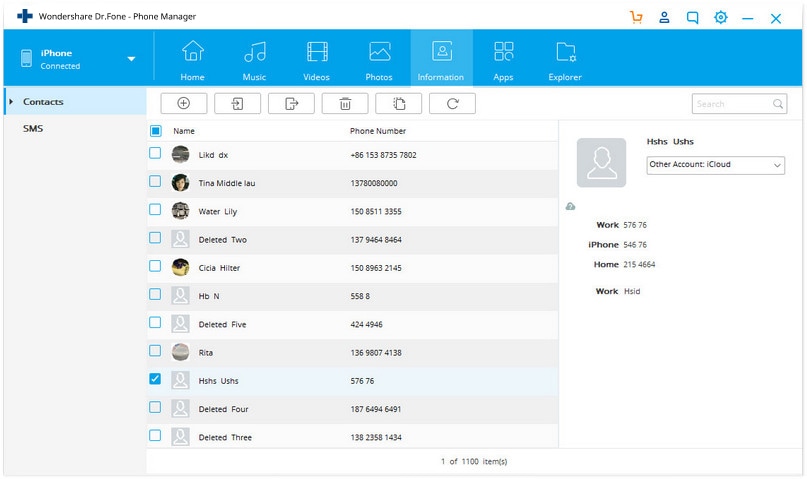
That’s it! In this way, you would be able to automatically export iPhone contacts to CSV. Now you can just visit the location and copy the file to any other device.
Part 2: Export iPhone contacts to Excel free using SA Contacts Lite
You can also try SA Contacts Lite to export iPhone contacts to Excel free as well. It is a freely available app that can be downloaded from the App Store. The app can be used to import and export your contacts in different formats. It makes the process of exporting iPhone contacts to Excel pretty easy. You can make it work with these simple steps:
1. Firstly, download SA Contacts Lite on your iPhone. Whenever you wish to export contacts from Apple iPhone 7 Plus to Excel, launch the app.
2. Go to the “Export” section of the app. It will ask permission to access the contacts on your device. Simply grant the respected permission to proceed.
3. Now, you can choose if you wish to export all contacts, groups, or selected contacts. Additionally, from the Property Style dropdown menu, you can choose if you wish to export iPhone contacts to CSV, vCard, Gmail, etc.

4. Go with the default option of “Separated” or “Backup” and tap on the Start button to initiate the process.
5. In no time, the app will create a CSV file of your contacts. From here, you can mail yourself the CSV file as well.
6. Furthermore, you can tap on the More option as well. This will allow you to upload the CSV file to any cloud service like Dropbox, OneDrive, Google Drive, etc.

7. For instance, if you wish to upload the file to Dropbox, simply select the provided option and grant the app the needed permissions.
Part 3: Export iPhone contacts to CSV using iCloud
If you don’t want to take the assistance of any third-party app to export iPhone contacts to Excel free, then you can also use iCloud. The process of exporting iPhone contacts to Excel using iCloud is a little tedious compared to other methods. Though, these steps will help you meet your requirements.
1. Before you proceed, make sure that you have already synced your iPhone contacts with iCloud by visiting its Settings on your device.

2. Afterward, go to the official website of iCloud and log in with your credentials. From its welcome page, select the Contacts option.

3. Click on the gear icon (Settings) on the bottom left corner. From here, you can select all contacts in one go. Though, if you wish, you can manually select the contacts you wish to export as well.

4. Once you have made your selection, go to the Settings again and click on the option of “Export vCard”.

5. The exported vCard will automatically be saved in the Downloads folder (or any other default location). Now, you can simply go to a vCard to CSV converter web tool to convert the vCard to a CSV file.

We hope that our quick and smart guide would be able to help you export contacts from Apple iPhone 7 Plus to Excel. Dr.Fone Transfer provides a fast and easy solution export iPhone contacts to CSV and other formats. It can also be used to transfer other types of content between your iOS device and computer too. Give it a try and make the most of your iPhone without any trouble.
Also read:
- [New] The Ultimate Guide to Restoring Windows Photo Viewer on Win 11 for 2024
- [New] Unveiling TikTok's Visual Makeover Techniques
- [Updated] Elevating Video Quality Sharing iMovie Work via YouTube for 2024
- [Updated] Excellent Record Maker Chromebook Edition
- How to Transfer Everything from Apple iPhone 14 Pro to iPhone 8/X/11 | Dr.fone
- How to Transfer from Apple iPhone 14 to Samsung Galaxy S20? | Dr.fone
- In 2024, Various Methods to Transfer Pictures from Apple iPhone 13 to PC | Dr.fone
- Movaviの返品ポリシー:お客様向けガイド
- Transfer your Apple iPhone SE (2022) Apps to New iPhone | Dr.fone
- Title: Easy Methods How To Transfer Pictures From Apple iPhone 7 Plus to PC | Dr.fone
- Author: Charlotte
- Created at : 2024-10-28 20:40:06
- Updated at : 2024-10-29 19:39:16
- Link: https://iphone-transfer.techidaily.com/easy-methods-how-to-transfer-pictures-from-apple-iphone-7-plus-to-pc-drfone-by-drfone-transfer-from-ios/
- License: This work is licensed under CC BY-NC-SA 4.0.